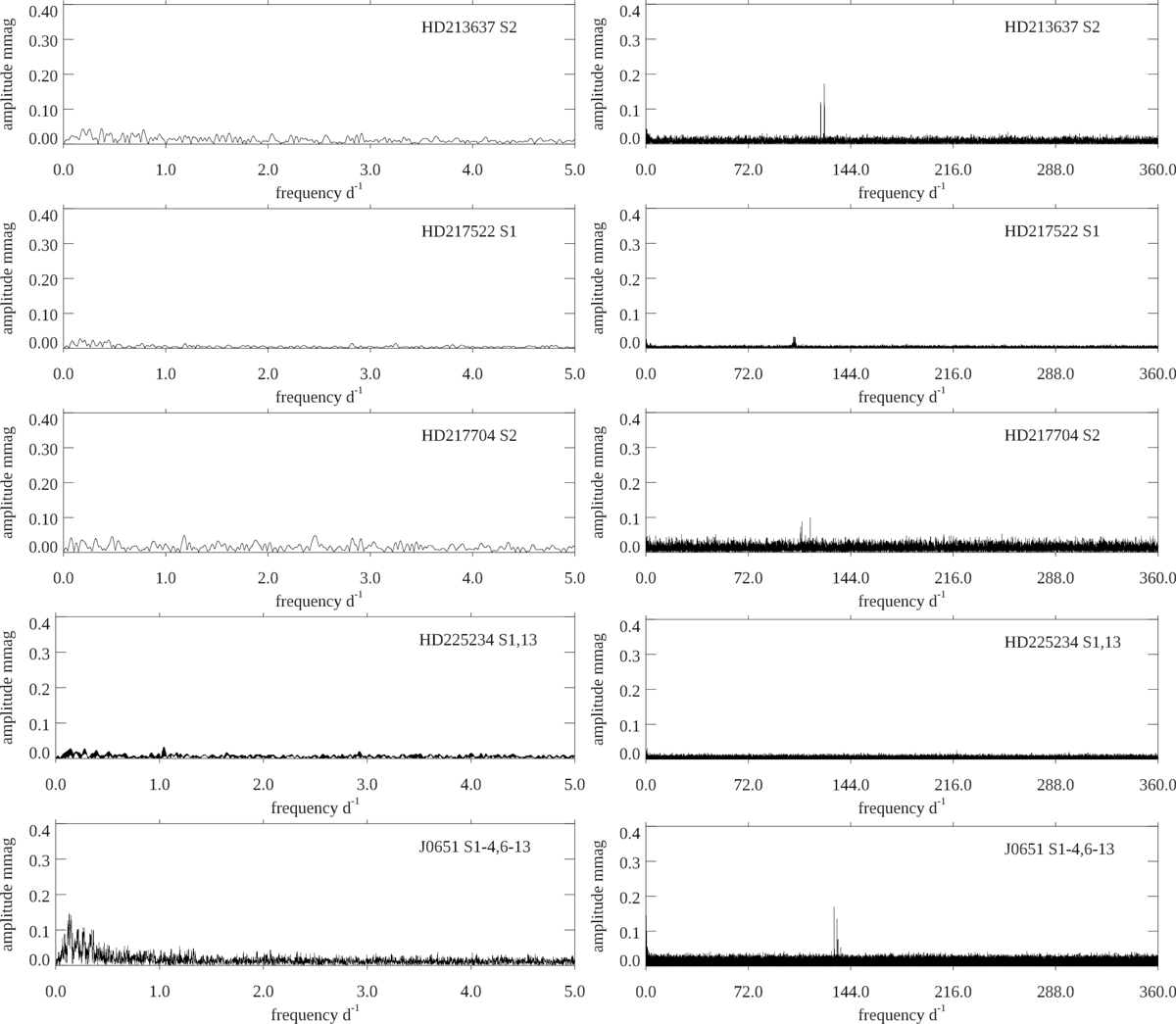Fig. 2.

Amplitude spectra for the long-period Ap stars. Each row presents a low-frequency amplitude spectrum showing no rotational variation in the left panel, and a full amplitude spectrum to the Nyquist frequency of 360 d−1 in the right panel, which sometimes indicates pulsation, usually of the roAp variety. We note the large reduction in the ordinate scale compared to Fig. 1, and other changes in that scale from panel-to-panel. HD 213637 has no rotational variation, but is a known roAp star (see e.g. Martinez et al. 1998a; Elkin et al. 2015; Cunha et al. 2019) with two roAp peaks at 122.8998 d−1 (A = 120 μmag) and 125.4853 d−1 (A = 172 μmag); these two frequencies have a separation of 30 μHz, which is plausibly half the large separation. HD 217522 has no clear rotation variation, but obvious roAp variations around 104 d−1, which are well known (see e.g. Medupe et al. 2015). HD 217704 is a known roAp star (Cunha et al. 2019) with peaks in the range 108−116 d−1. J06514218−6325495 is a known roAp star discovered by Holdsworth et al. (2014) with a study of the TESS data by Cunha et al. (2019) showing frequencies in the range 132−135 d−1.
Current usage metrics show cumulative count of Article Views (full-text article views including HTML views, PDF and ePub downloads, according to the available data) and Abstracts Views on Vision4Press platform.
Data correspond to usage on the plateform after 2015. The current usage metrics is available 48-96 hours after online publication and is updated daily on week days.
Initial download of the metrics may take a while.


